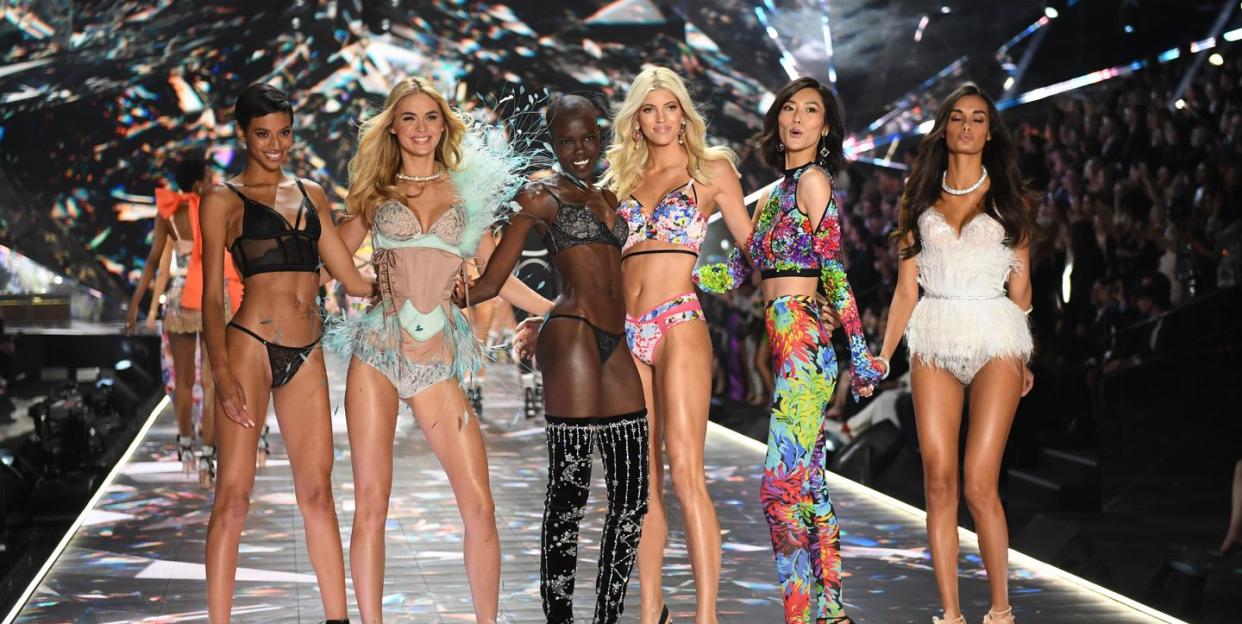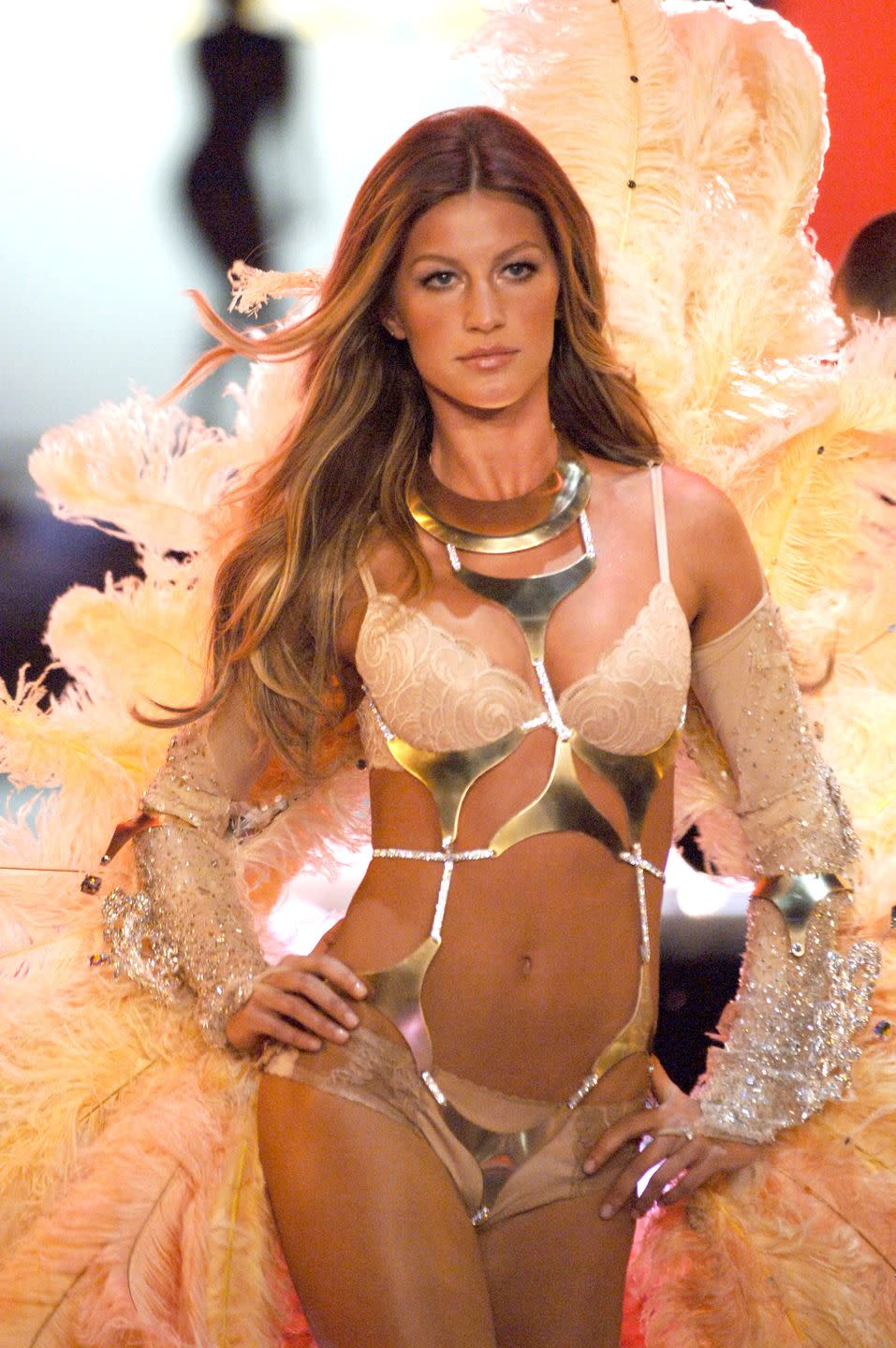The Fashion World Is Changing. Will the Victoria’s Secret Show?

Since it launched in 1995, the Victoria’s Secret fashion show has become a global spectacle of toned bodies, feathery costume wings, big hair, and bright white smiles, consumed by millions across TV and social media. It bolsters the superstardom of the models it casts, with alumna including Tyra Banks and Gisele Bundchen and current catwalkers Gigi and Bella Hadid, Kendall Jenner, and Jasmine Tookes.

I’ve gone to several Victoria’s Secret fashion shows over the past ten years and always thought it was a bit of campy fun, like going to a Vegas show. Unlike most fashion shows, the models actually smiled. Set to a live performance by a global superstar, the show portrayed sexuality so cartoonishly (and, yes, problematically) exaggerated it was therefore not sexual at all. But attitudes around women’s bodies and women’s sexuality have changed dramatically over the last few years and thank god. After #MeToo in particular, I wondered if and how the Victoria’s Secret show would respond.
I got my answer shortly before the show taped. Victoria’s Secret Chief Marketing Officer Ed Razek and EVP of public relations Monica Mitro gave an unfiltered interview to Nicole Phelps at Vogue.com, weighing in on the annual show, its waning relevance, inclusivity, and their competitors (“We’re nobody’s Third Love”). Razek sounded combative when Phelps asked about the Instagram generation. “Are they looking for something new from Victoria’s Secret?” she asked. He responded, in part:
“It’s like, why doesn’t your show do this? Shouldn’t you have transsexuals in the show?” No. No, I don’t think we should. Well, why not? Because the show is a fantasy. It’s a 42-minute entertainment special. That’s what it is. It is the only one of its kind in the world, and any other fashion brand in the world would take it in a minute, including the competitors that are carping at us. And they carp at us because we’re the leader.”
I reached out to Razek to clarify his statements, which not only used an outdated word to describe the transgender community, but also seemed to suggest that a transgender model couldn’t be a part of the Victoria’s Secret “fantasy.”
“My remark regarding the inclusion of transgender models in the Victoria’s Secret Fashion Show came across as insensitive. I apologize,” Razek said via email. “To be clear, we absolutely would cast a transgender model for the show. We've had transgender models come to castings ... And like many others, they didn't make it ... But it was never about gender. Honestly, I really hope that a transgender model will make the show soon. I admire and respect their journey to embrace who they really are."
Razek talks as if casting in his show is an objective metric, as if the models are competing to win a 400M race and not working very hard to meet his physical standard. And, bewilderingly, he talks as if he doesn’t have the power to change the standard. He does. And if he does it could make a big difference for millions of women, all of whom have money to spend. (Victoria's Secret sales are on the decline after all.)
There was a time when the Victoria’s Secret show felt like a refreshing departure from the serious and seriously too white and too thin fashion world. Runway shows, particularly in years past, could feel severe and even a little sad. Models often stomped down the runway unsmiling. The castings were often all white. By contrast, the Victoria's Secret fashion show was campy and joyful. Models smiled and blew kisses and danced on stage to live musical acts against kaleidoscopic sets. They were more athletic than stick thin, and (slightly) more diverse than the runways of the late ‘90s and early ‘00s.
This is what the Victoria's Secret show has been and still is. But while Victoria's Secret has stayed the same the world has changed around it. Consumers want to see themselves represented, and via social media, they have a voice. Brands like Rihanna's Savage x Fenty and Chromat have always known this. After Rihanna’s inaugural Savage x Fenty show, which featured models of all colors and sizes and even a very pregnant Slick Woods who delivered her baby later that day, ELLE.com’s Style Director Nikki Ogunnaike wrote, “So this is what effortless inclusion looks like, huh?”
Trying to be the 1st Trans model of color walk a #VictoriaSecret Fashion show. #transisbeautiful #LeynaBloom 💕 pic.twitter.com/xkLW5W9YqO
- Leyna Bloom (@leynabloom) April 9, 2018
Over the last few years, petitions and social media campaigns have urged Victoria's Secret to think more inclusively about size and gender. Teen Vogue’s Jessica Andrews spoke to plus model Tess Holliday, transgender models Carmen Carrera and Leyna Bloom, and Madeline Stuart, who has Down syndrome, all of whom challenged Victoria’s Secret’s idea of representation. “Having a transgender girl up there who works just as hard to maintain her mind and body, but also heart, soul, spirit, life, transition, perseverance, and will to survive? That’s representation that all women can look up to!” Carrera said.
"I don’t think we can be all things to all customers," Razek said. True, the Victoria’s Secret runway show has never reflected reality. But as a growing chorus of women say, “we like the way we are,” fantasy starts to look like a risky bet.
('You Might Also Like',)

